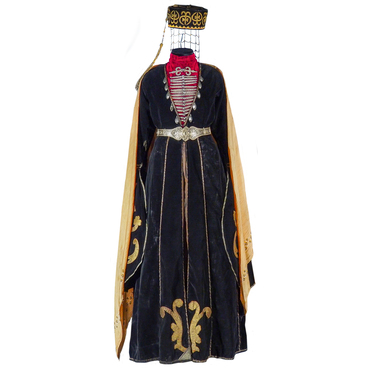Richly decorated workboxes were called khyapschypyl. Seamstresses kept galloons, golden threads and everything they used while working.
The Adyghe gold embroidery art has a long history. It became a popular home craft in the 17th century and soon gold embroidery, galloon weaving, braiding various decorative elements became an obligatory skill for girls and women. Girls began to be taught the skill at a very young age, when they were 6-7 years.
Clothes embroidered with precious threads were very expensive. Their price included the cost of expensive materials and a high price paid to the seamstress for her painstaking and long work. It took a long time to embroider clothes, from a month to a whole year, depending on the complexity and ornamentality of the needlework. Therefore, only members of well-to-do families could afford them.
The Adyghe gold embroidery art has a long history. It became a popular home craft in the 17th century and soon gold embroidery, galloon weaving, braiding various decorative elements became an obligatory skill for girls and women. Girls began to be taught the skill at a very young age, when they were 6-7 years.
Clothes embroidered with precious threads were very expensive. Their price included the cost of expensive materials and a high price paid to the seamstress for her painstaking and long work. It took a long time to embroider clothes, from a month to a whole year, depending on the complexity and ornamentality of the needlework. Therefore, only members of well-to-do families could afford them.



